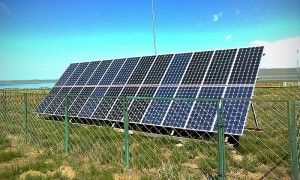Solar power fries ratepayers
by Joseph Perkins | December 29, 2012 2:41 am
 [1]
[1]
Dec. 29, 2012
By Joseph Perkins
Most lawmakers in Sacramento have no idea who Robert K. Merton was. But they almost certainly are familiar with terms the late great American social scientist introduced into the popular lexicon, including “unintended consequences.”
An apt example of that concept is the 2011 state law requiring that a third of all retail electricity sales come from renewable sources by 2020, ostensibly to curb the greenhouse gas emissions that contribute to global warning.
A report this month by the Little Hoover Commission[2], an independent state oversight agency, says that the seemingly well-intentioned mandate could slap the state’s consumers with billions of dollars in unnecessary costs.
Indeed, the state’s major utilities already are warning that customers that have not gone solar will see their rates go up to subsidize customers that have installed solar panels on their rooftops.
It will amount to a $1.3 billion a year transfer from customers of Pacific Gas & Electricity, Southern California Edison and San Diego Gas & Electric — whose electricity is generated by natural gas, nuclear energy, large hydro and other non-renewable sources — to the less than 1 percent of utility customers who rely on solar power.
Diktat
That’s the unintended consequence of a state diktat that PG&E, SoCal Ed and SDG&E purchase atoms from home solar generators at the same price they resell them to non-solar customers. That makes it impossible to cover their fixed costs.
Akbar Jazayeri, vice president of regulatory operations for SoCal Ed, explained the dilemma facing California utilities to Bloomberg News. “You get into a situation,” he said, “where you have a transmission and distribution system with nobody paying for it.”
And the situation of which Jazayeri spoke will get progressively worse as the state government proffers financial incentives to those that install solar panels on their roofs.
“Join the thousands of home and business owners who have earned cash back by installing solar energy systems,” advertises the California Solar Initiative[3], a program overseen by the California Public Utilities Commission.
And the cost of the CSI program, a de facto tax on electricity ratepayers that haven’t gotten with the program, pales in comparison with costs borne by ratepayers and taxpayers alike to fund new solar plants throughout the Golden State.
Indeed, the Los Angeles Times this past fall lamented that “a new breed of prospectors — banks, insurers, utility companies — are receiving billions in subsidies while taxpayer(s) and ratepayers are paying most of the costs.”
Among the solar prospectors in the Mohave Desert, the Times reported, are Berkshire Hathaway, headed by gazillionaire investor Warren Buffett, General Electric, JPMorgan Chase, Morgan Stanley and Google.
And the electricity produced by the solar plants the corporations are building at the expense of California taxpayers and utility ratepayers won’t be cheap, costing two to four times as much as conventional electricity.
Stanford University economist Frank Wolak, an expert on California’s electricity market, told the Times that consumer electricity bills could rise as much as 50 percent by the time Buffet and his fellow solar prospectors are generating megawatts.
“It’s easily in the billions of dollars,” he said.
Of course, lawmakers in the state capital will claim that no one had any idea that ramping up solar power in California would be so darn expensive.
But Bob Merton did.
- [Image]: http://www.calwatchdog.com/2011/05/24/gridlock-on-renewable-energy-highway/solar-panels-wikipedia-4/
- Little Hoover Commission: http://www.lhc.ca.gov/studies/214/Report214_Final%20Complete.pdf
- California Solar Initiative: http://www.gosolarcalifornia.ca.gov/about/csi.php
Source URL: https://calwatchdog.com/2012/12/29/solar-power-fries-ratepayers/